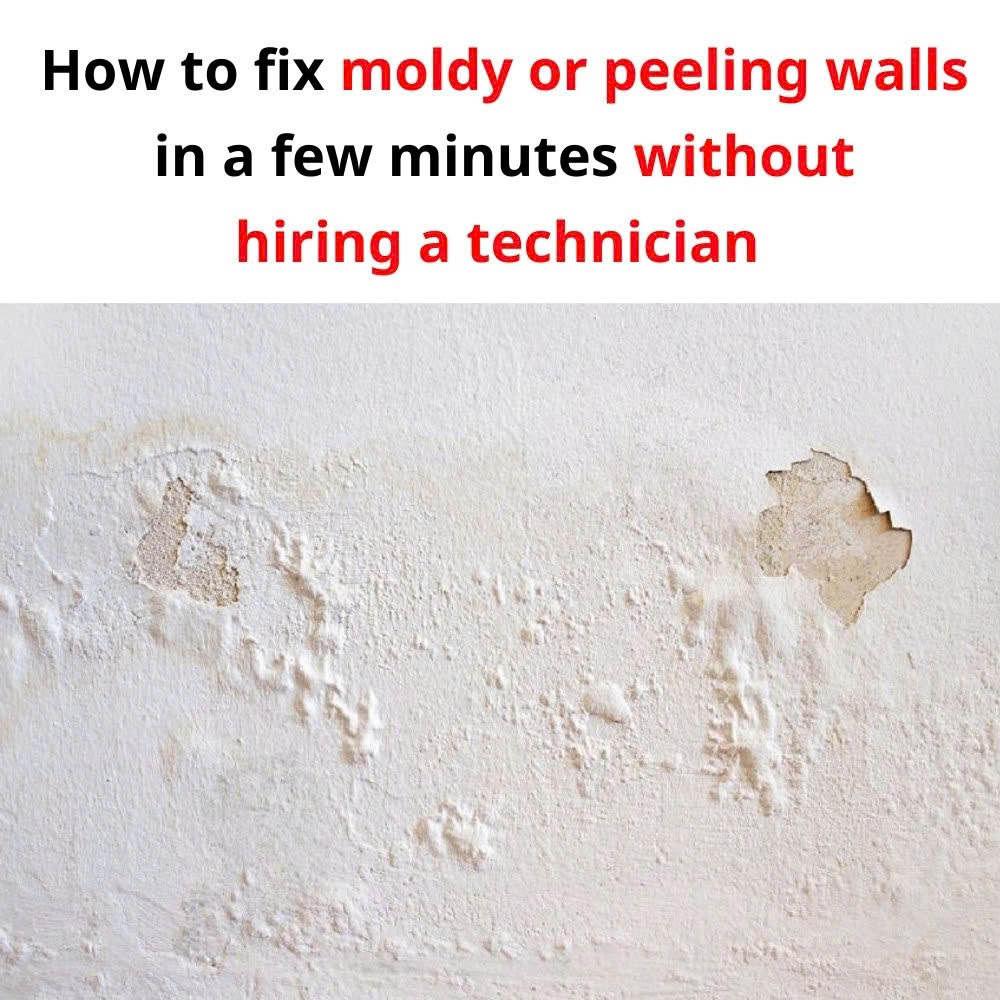Over time, walls can develop unsightly problems like mold, blistering, or peeling paint. These issues often worsen during humid or rainy seasons, not only affecting the visual appeal of your home but also posing potential health risks to your family. While hiring a professional may seem like the easiest route, many of these problems can actually be resolved with a little time, effort, and the right tools.

Understanding how to address these common wall problems can save you money and help maintain a healthier living space. Below is a step-by-step guide on how to tackle moldy, blistered, or peeling walls and restore them to their former glory.
1. How to Treat Moldy Walls
Mold doesn’t just create unpleasant dark patches on walls—it can also trigger allergies and respiratory problems. To deal with it effectively, follow these steps:
First, remove visible mold using a dry toothbrush or a stiff brush to gently scrub off the affected spots. Once the visible mold is cleared, use a soft cloth soaked in alcohol to wipe the area thoroughly. This ensures that any lingering mold spores are neutralized, and the surface is dried properly.
Next, prepare a bleach solution. For light mold infestations, mix bleach and water in a 1:99 ratio. For more stubborn mold, increase the concentration to a 1:20 ratio. Pour the solution into a spray bottle and spray it evenly over the moldy patches. Allow the solution to sit for a few minutes before wiping it off.
Once the wall is completely dry, use sandpaper to smooth out the surface. Then, apply a layer of waterproof primer to seal the area and prevent future mold growth. Always ensure the room is well-ventilated while working with bleach to avoid inhaling harmful fumes.
2. How to Fix Blistering Walls
Blistered walls are typically caused by trapped moisture, poor surface preparation before painting, or the use of low-quality materials. To address blistering, start by removing damaged paint and filler. Use a scraper to carefully peel off any blistered or peeling paint. If poor-quality wall filler was used previously, remove it entirely and replace it with a high-quality alternative.
For small blisters, scrape away the damaged area, sand down the edges, and then apply a primer before repainting the spot. For larger blisters, remove the entire damaged section, allow it to dry thoroughly, then reapply plaster and smooth the surface before priming and painting.
To prevent future blistering, ensure any wall cracks or leaks are repaired beforehand. Avoid painting during excessively humid or rainy seasons, and always use primer and paint products from the same brand to guarantee consistent results. Waterproofing your walls during construction or renovation is a long-term investment that will save you headaches in the future.
3. How to Fix Peeling Walls
Peeling paint not only looks unattractive but can also create sanitation concerns due to falling dust and debris. Begin by using a scraper to remove all loose and peeling paint. Sand the edges of the area until the surface is smooth, and then apply a fresh layer of primer before repainting.
For severe peeling, it may be necessary to remove the entire damaged wall layer. Once exposed, treat the surface with a high-quality primer and repaint with durable paint.
You can also test the wall filler quality by lightly spraying water on the affected area. Use a scraper to see if dust falls off easily. If it does, the original filler was likely of poor quality, and you’ll need to sand, prime, and repaint the section.
High-quality paint products and allowing proper drying times between layers are essential for preventing peeling issues in the future.
Additional Tips for Long-Lasting Results
To ensure your hard work lasts, address any water leaks or sources of excessive humidity in your home. Proper ventilation is also key, especially in moisture-prone areas like kitchens and bathrooms. Regular maintenance is equally important—inspect your walls periodically for early signs of mold, blistering, or peeling and address them before they become bigger problems.
Why Fixing Walls Yourself Is Worth the Effort
At first, dealing with moldy, blistered, or peeling walls might feel overwhelming, but the process is entirely manageable with the right approach. Taking the time to fix these issues yourself not only saves money but also gives you a sense of pride and accomplishment.
A well-maintained wall is about more than just appearances—it protects your home’s structural integrity and ensures a cleaner, healthier living environment for your family.
So, grab your tools, follow these steps, and give your walls the attention they deserve. With a little effort and care, you can bring back their original beauty and create a space you’re proud to call home.
If you found this guide helpful, don’t keep it to yourself—share it with friends and family who might be facing the same wall woes. Together, we can all enjoy homes that look great and stay strong for years to come!





